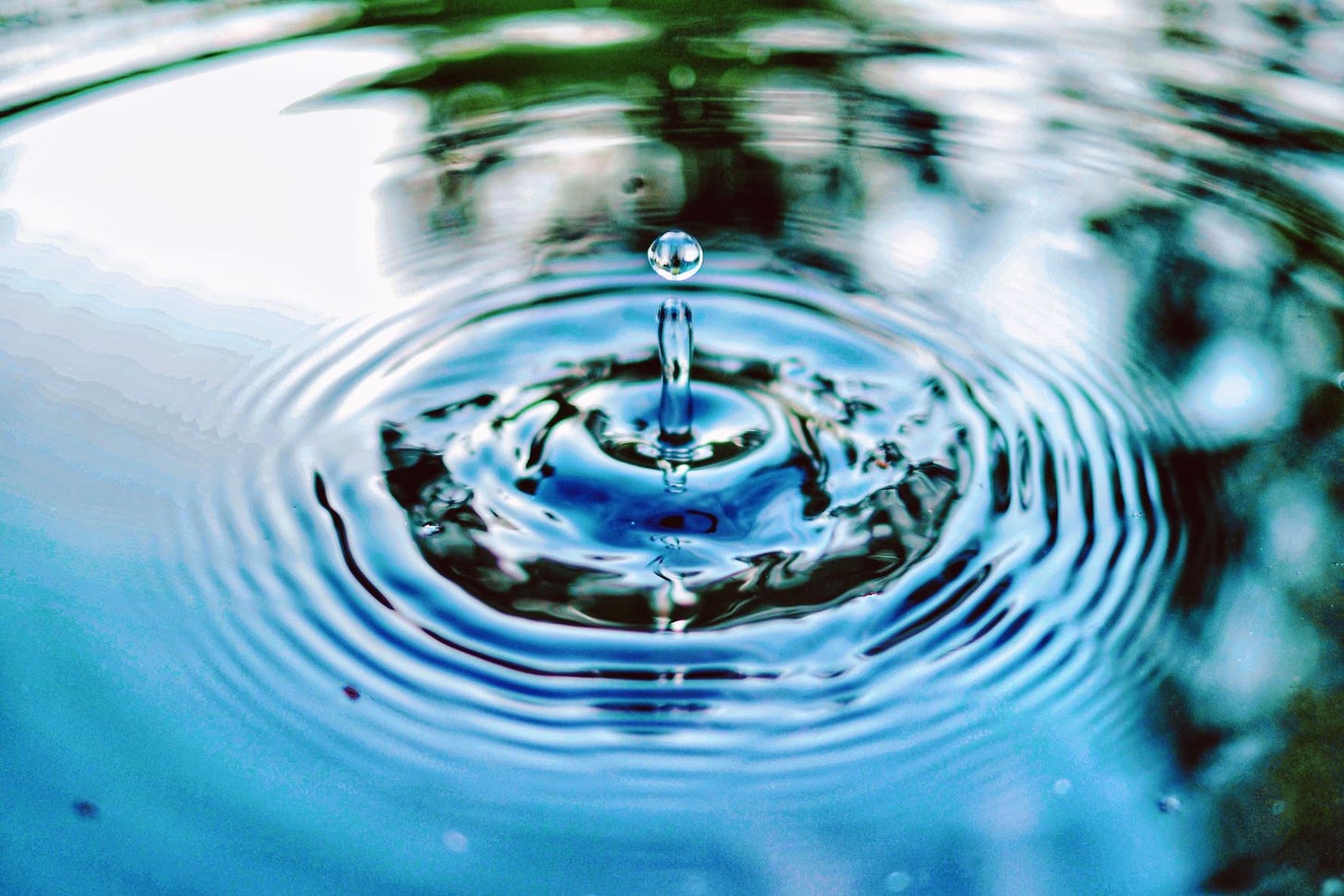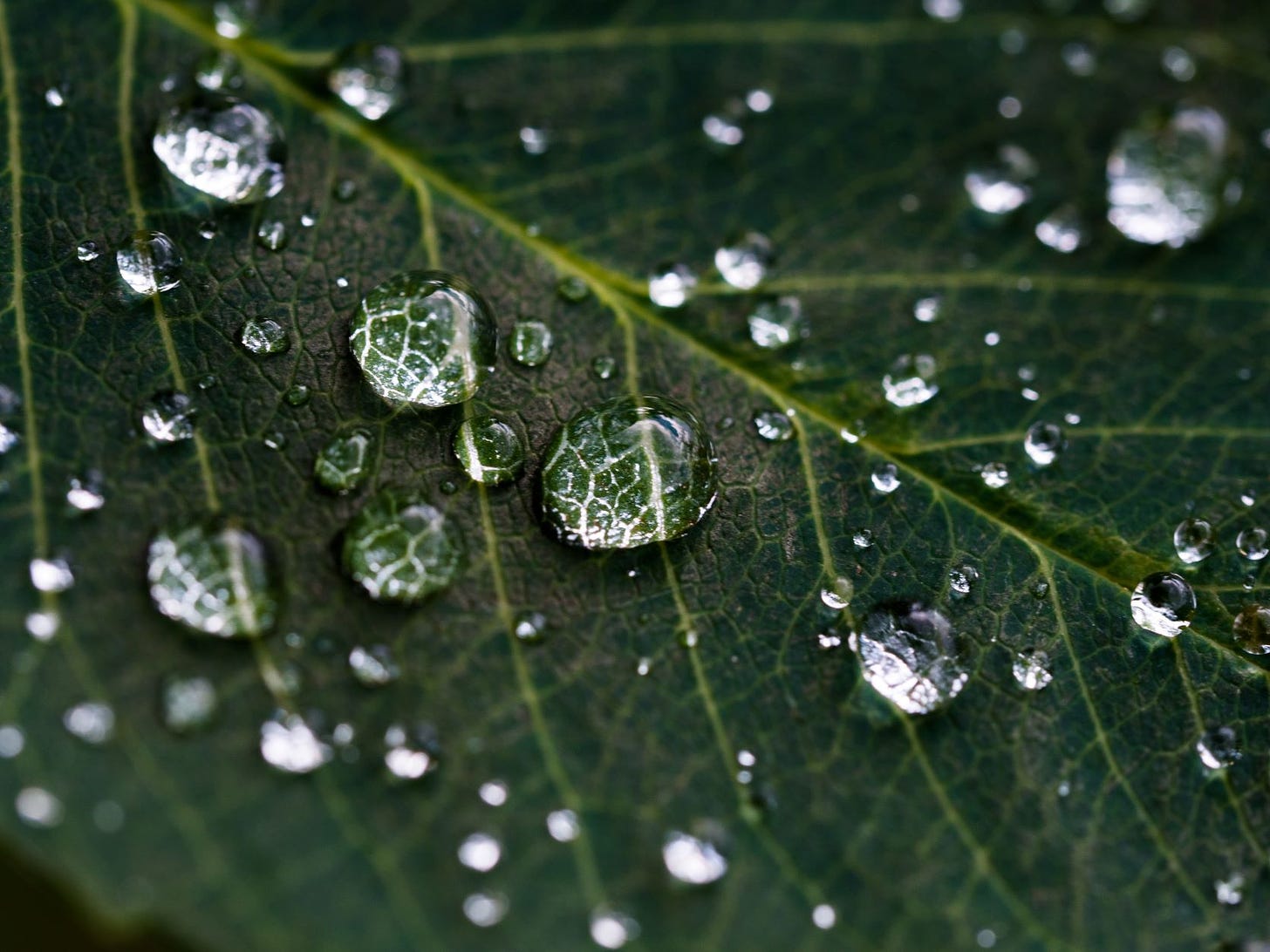You’re at Mother E, a free newsletter published every other Sunday. I’m telling the stories about our kinship and connections with other species in a climate-changing world. You can read more posts here. Did you miss the last one? Wings Without Borders is about fall migrations.
This week, we’re dipping into the subject of WATER, with a look at how a drought in one state can have wide-spread effects. Also, take a birds-eye tour of the new Sierra Valley Preserve. Lastly, cup your hands around a lovely watery poem from Mary Oliver.
To subscribe to Mother E, sign up below.
I RECENTLY STROLLED INTO A CITY PARK known for its wildlife stream and lake in Davis, CA. I hadn’t been there in over 18 months, and I stopped in surprise. No water was visible, and all that remained of the lake was dry, cracked mud chips. The once noisy avian wetlands now had only a few birds flitting through the yellowing trees.
Water is such an integral element of life that we often take it for granted. That’s changing in states and regions hit by severe drought.
Water availability on Earth has entered a period of instability due to climate change. What does this mean? A warmer climate causes more water to evaporate from the Earth’s surface and oceans. For every 1 degree F of warming, the air holds four percent more water. This water suspended in the atmosphere acts as a greenhouse gas, trapping more heat.
The result is more droughts on the land in some places and harsher storms in other regions. Earth is currently warming about 10 times faster than the normal background rate over the last 800,000 years.
Since many of us can turn on a tap and water flows freely, it becomes easy to forget the forces of warming and drought, with their cumulative damage. In California, drought has pushed some towns to truck in water because domestic wells have dried up. Up the coast from where I live, the small city of Fort Bragg, CA. has just started operating a desalinization plant out of necessity.
Want to know how your town is faring for drought conditions? Visit drought.gov and enter your U.S. zip code.
The impacts of drought are widely felt. California’s Central Valley is an 18,000 square mile area 450 miles long that dominates the heart of the state. Six and a half million people live there. It’s been an agricultural powerhouse that grows more than a third of the country’s vegetables and about two-thirds of its fruits and nuts.
Foods grown here are also exported around the world, so it’s an essential source of the world’s food supply. Whether you live in Boston or Berlin, you’re probably consuming foods grown in California. The drought in the Central Valley likely impacts what’s available to put on your dinner plate. https://www.newyorker.com/news/california-chronicles/growing-uncertainty-in-the-central-valley
As climate change brings higher temperatures, water demand increases for agriculture, humans, and wildlife. Just as we need more water, less is available.
New protections for the precious California aquifer limit the amount of water to be pulled out of the ground. Eighty percent of the water used in the Central Valley has historically gone to agriculture. Now, with water curtailment, more farmers are ripping out orchards and letting crop fields lie fallow and unplanted. The region “is increasingly experiencing water stress, which is the inability…to meet human and environmental water demands,” according to the Union of Concerned Scientists. https://www.ucsusa.org/resources/troubled-waters
Where will this century’s water come from?
What’s the solution to a shortage of water and land that can’t be used for planting? The answers will come from making a variety of changes besides just water conservation measures.
Scientists and policymakers offer some ideas below.
Build solar or wind farms on dry farmland.
Increase regenerative farming practices. A 1% increase in soil organic matter helps soil retain about 20,000 more gallons of water per acre.
Shift from large industrial farm operations to medium or smaller-sized farms, using practices that benefit the soil, air, and water.
Increase government water reclamation projects, aquifer-recharging, and desalinization plants.
Use abandoned farmland for native wildlife corridors and other ecological services. Native birds and animals help regenerate the landscape.
Preserve and protect wetlands. (See article below.)
Get creative with rainwater recycling and gray water use, grow food crops that thrive with less water, and bring more water-frugality into home life.
Water is essential. Water brings life. Water is you.
Visit a western-scale California wetlands just opened to the public
Sierra Valley Preserve— Turning historic farmland into wildlife wetlands
Twenty years is a long time to carry a vision. Over that time period, The Feather River Land Trust, The Nature Conservancy (TNC), and the Northern Sierra Partnership purchased private lands to piece together today’s magnificent 2,586-acre wildlife preserve with the goal of adding more. About 1,100 acres are seasonal or permanent wetlands, making it a birder’s paradise.
This was a good example of repurposing lands that had been farmed or grazed since the late 1800s to create new unified wildlife habitat. It’s a migratory stop for 230 bird species along the Pacific Flyway. In season, see Sandhill Cranes, White-faced Ibis, Yellow-headed Blackbirds, and hundreds of other birds.
The Nature Conservancy says, “95% of California’s wetlands have been lost to farming and development.” Somehow, we failed to leave habitat space for the birds. This new preserve is a unique opportunity to reverse some of those wetland losses and support bird populations.
[Sierra Valley Preserve] “sits at the confluence of three ecoregions: The Northern Sierra Nevada, the Southern Cascade, and the Great Basin. Until recently, the Sierra Valley was one of the most difficult natural areas to access in California because nearly all of its wildlife-rich wetlands were on private lands.”
The Nature Conservancy, Sierra Valley Preserve
https://www.nature.org/en-us/get-involved/how-to-help/places-we-protect/sierra-valley/
In 2021, Sierra Valley Preserve is now open to the public 365 days a year. To visit, see directions and map. You just might feel like you’re back in the wild west, with wide vistas, rugged mountains, and flocks of birds circling. Water is what makes it all livable.
“At Blackwater Pond”— A water poem by Mary Oliver
Click on the photo or link below to read this one-paragraph poem. Can you taste the water in this poem just from her description?
http://www.stevenkharper.com/atblackwaterpond.html
http://www.stevenkharper.com/atblackwaterpond.html
I love to hear from readers. Share your comments above, reply to this email to reach me privately, or contact me on Twitter @RobinApplegarth
Robin A.
Not subscribed yet? You can sign up below.



